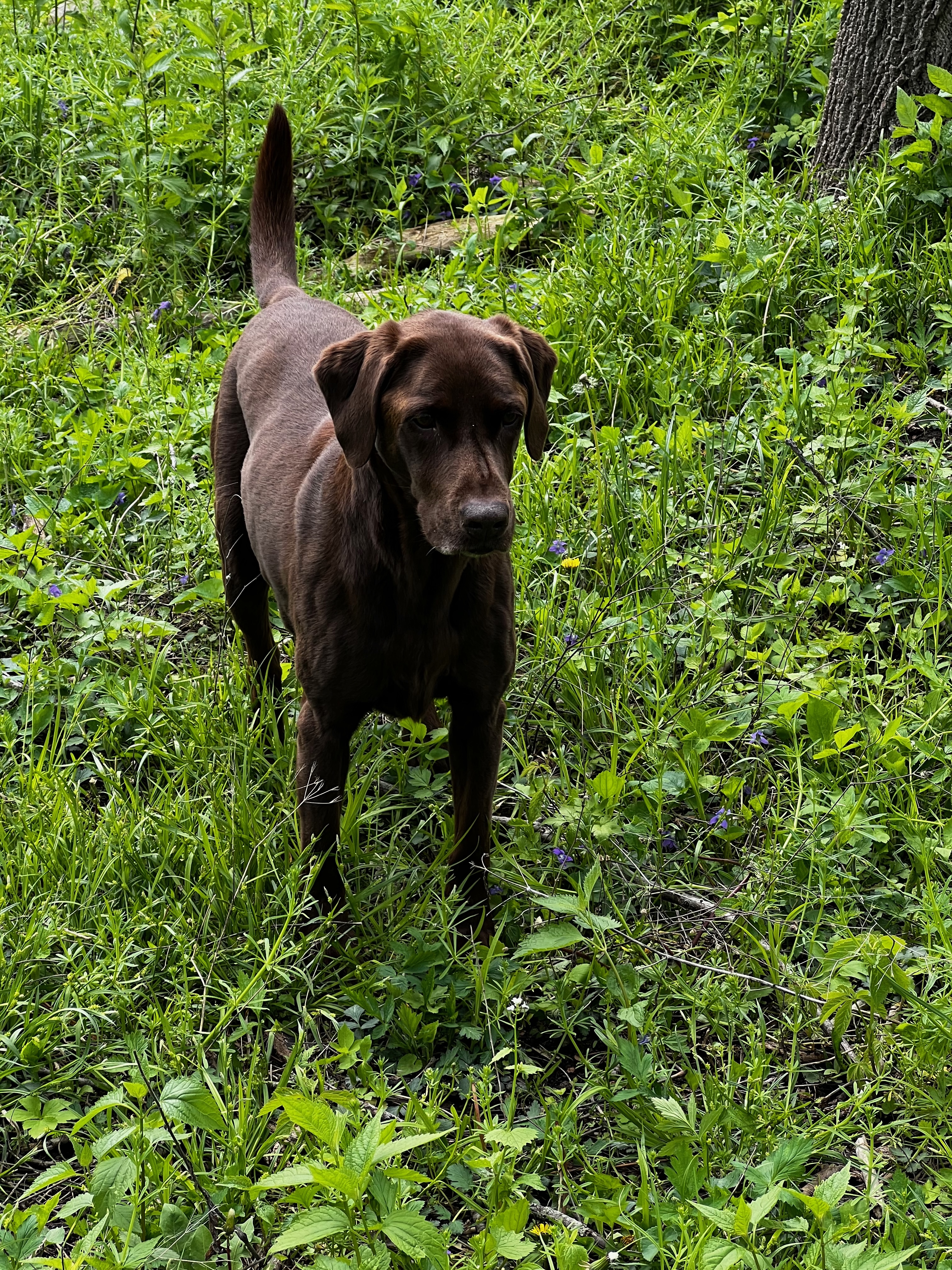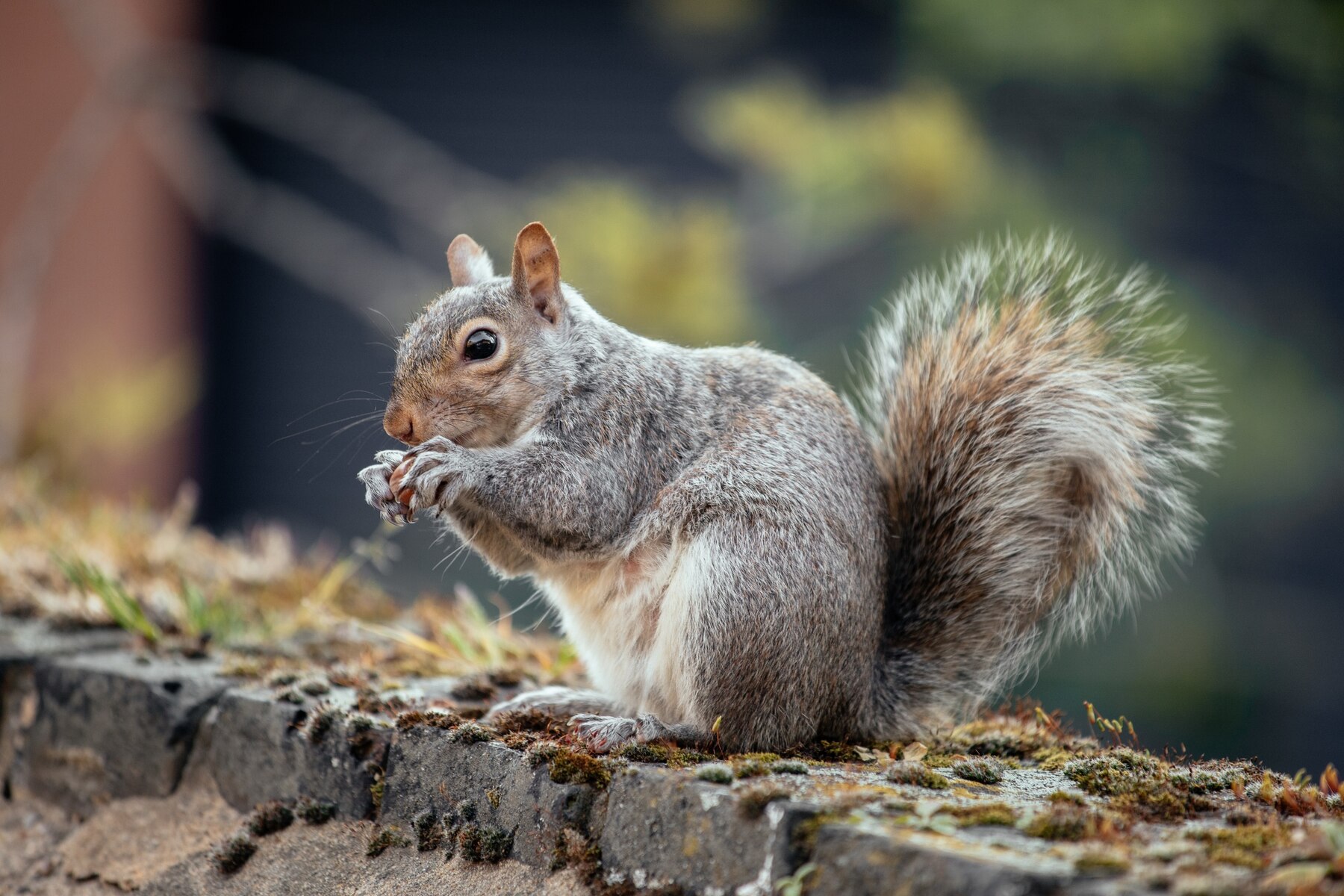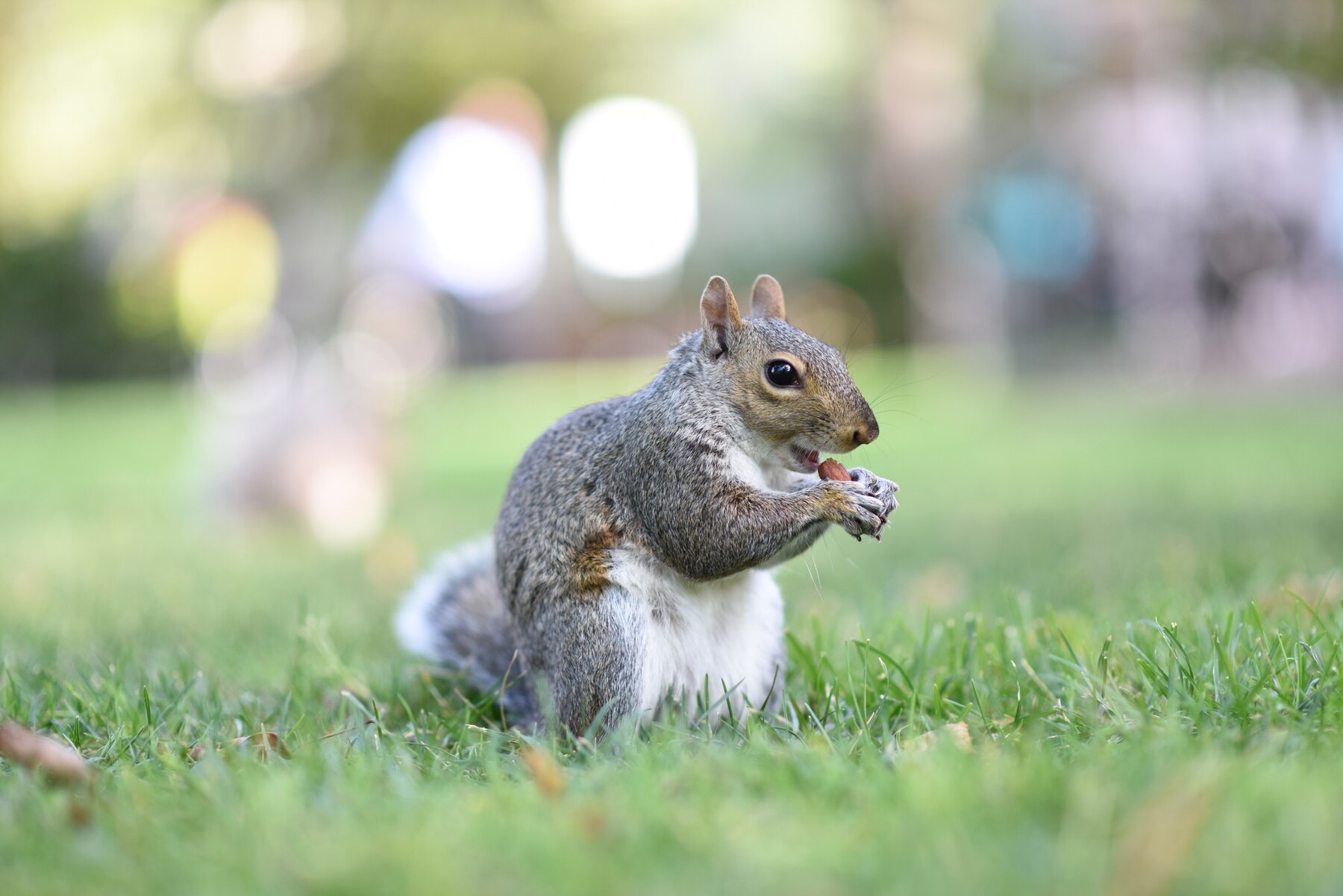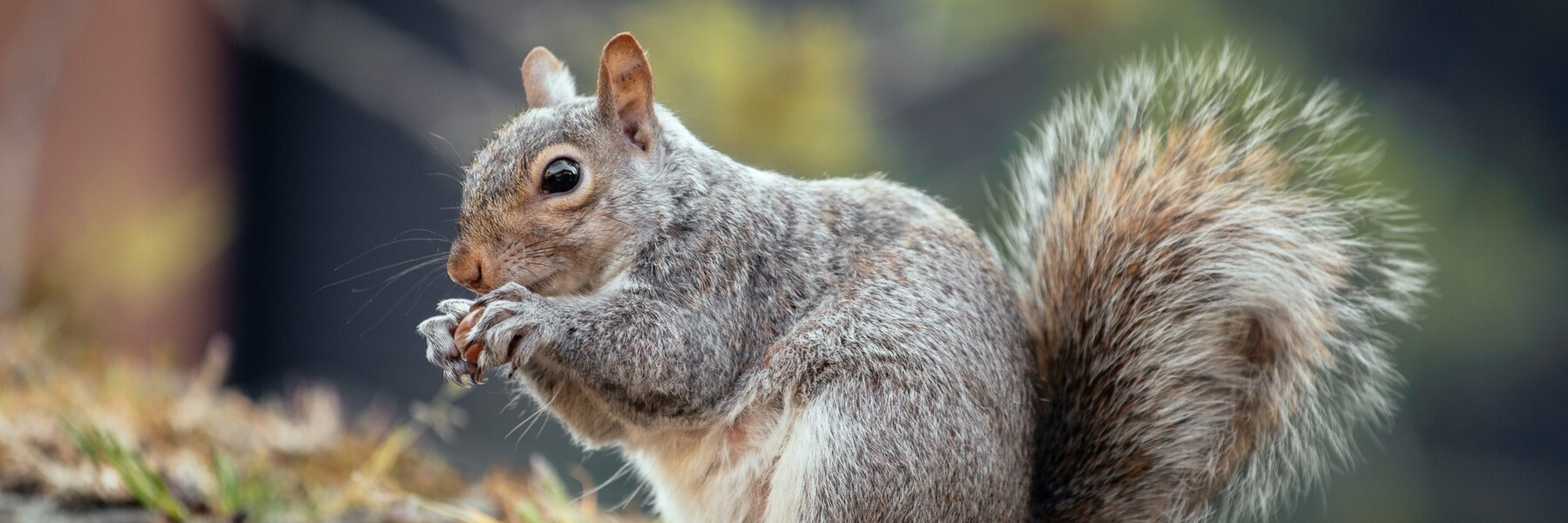YESTERDAY:
I took my dog to the woods, and I can’t stop thinking about what happened. Maybe telling you will help.
A LITTLE BACKGROUND AND A SMALL WARNING:
Not many days go by that one or both or all three of us don’t go out to the ‘The Land.’ It’s a hundred-plus acres of gently rolling Iowa terrain that my husband Alex and I bought fifty years ago. We (He, actually. I’m just the cheering section) gradually converted what had been corn and bean fields into native prairie, changing it back into what we imagine it looked like 150 years ago. For four decades, we lived in the old farmhouse across the road. We had horses and longhorn cattle and a barnful of cats (strays and dump-offs, mostly), and dogs, a series of dogs—Beagles, Brittany Spaniels, and Labrador Retrievers. Our animals lived as long as they could and then they died—nobody’s fault, no repercussions; their time just ran out. We grieved for each one, and I can tell you that there are few things as big and flat as a dead horse. We did once watch a huge owl coast down, pick up a kitten, and vanish into the woods. “Oh no!” I said. “That hateful bird.”
“Nature,” said Alex.
This is not a Walt Disney story.
Ten years ago, we decided it would be smart to move to town. We sold the house, the cows, the horses, and gave away two dogs to people we knew would love them. The cats stayed in the barn. Leaving was hard, but we brought one dog with us, a Chocolate Lab named Hyde. And we kept ‘The Land’ across the road. The railroad track divides the upper and lower halves. Little Bear Creek meanders through the bottom part. And because Mr. Wisecarver, whose family owned ‘The Land’ generations before we did, loved trees, we can start our almost-daily walks through five acres of mature walnuts, maples, and oaks. Alex has made paths through the woods with the DR mower. Hyde scorns the paths but loves the woods as much as we do.

Hyde standing at attention in the field. Photo by Alexander ‘Sandy’ Moffett.
BACK TO YESTERDAY:
Hyde and I drove our red Prius (well, I drove; she rode in the back) the three miles on the always-filthy road (It’s dirt and gravel and perpetually either dusty or muddy) out to ‘The Land’. It’s a good excuse not to wash the car. A committee meeting had kept Alex in town, and he was not very happy about it. I pulled cautiously (it was one of the muddy days) into the driveway to the woods, opened the back door, and Hyde bounded out. For two heartbeats, she stood absolutely still, completely alert—legs stiff, head high, nose quivering—and then she was off. I love watching her sprints, turns, and sudden stops. Her brown coat is seal-slick, and she’s sweet as syrup to friendly adults, almost all children, and about half the dogs she meets. But to small woodland animals, she’s a murderess.
It’s in her blood to point and retrieve pheasants, and Alex has trained her to fetch the birds he shoots and return them with a soft mouth. If she violates this rule (which rarely happens) and takes a plump pheasant into the tall prairie grass for a snack, Alex gives her a quick buzz with the electric collar she wears, takes the carcass out of her mouth, scolds her harshly, briefly—and the incident is closed—no guilt, no recriminations. But no rules regulate Hyde’s treatment of the mice, rabbits, and squirrels who make their homes in our woods. Usually, these creatures are too fast for our dog, and I’m certain the word is out about this vicious wolf-descendant who shows up nearly every day to threaten them in what they regard as their territory.
Morality, Alex regularly assures me, is not involved. Unlike humans, who are protected and constrained by codes and laws and religious beliefs, these animals, both prey and predator, act instinctively and, I really like to think, register neither guilt nor blame. In fact, what I witness in the woods seems very like a game. Walking along the leaf-covered paths, I enjoy the fragrance of trees, earth, and clean air—and the sight of Hyde, whose nose is thousands of times more sensitive than mine, when she picks up a scent, crouches into her stealth mode, and slinks through the briars and fallen branches toward her quarry. The mice and rabbits run, literally, for their lives—and they almost always escape into the thick underbrush or a hole or burrow—though once, from a distance, I saw her find and gulp down a nest of baby rabbits as if they were marshmallows. “This is nature, this is natural,” I reminded myself, as my gentle, sweet dog came back to me, licking blood off her lips, to be petted.
Unlike those bunnies, squirrels are escape artists. Even more agile than Hyde, they zig and zag, jump and turn. They scurry up a near-by tree and sit, chattering, just out of reach, teasing my frantic dog. I must have watched Hyde chase 300 squirrels in our woods, and she’s only caught two—one lame and one halt.

Image by Wirestock on Freepik.
BUT BACK, AGAIN, TO YESTERDAY:
As soon as we got out of the car and entered the woods, Hyde picked up a promising scent and froze in a classic point. I mumbled my usual prayer that she wasn’t on the trail of a skunk, and then stood still to appreciate how she lowered her body and began to raise one foot at a time and set it down with a sure and careful grace and absolutely no sound. I held my breath—One. Two. Three. And then she became pure motion, chasing what I saw was—a squirrel. I relaxed, sure the little red-grey creature would reach the nearby walnut tree it was flying toward. But it misjudged. Maybe it slowed down to taunt Hyde. Maybe it was tired from shelling walnuts all day. Hyde caught the panicked animal, closed her jaws on its soft, cream-colored middle, then shook it fiercely, making its legs, head, and tail flail about. I saw blood. I saw the squirrel’s glittering black eyes.
“NO,” I screamed at Hyde. “NO. Bad Dog!”
She looked at me as if she didn’t recognize me at all. I grabbed her collar with my right hand and took the squirrel’s shoulders in my left. “No, Hyde,” I said again, but in a quieter, more reasonable voice. She opened her mouth and gave me her prey—then looked straight into my eyes, letting me know she did not feel contrite.
I looked at the gasping, bleeding animal in my hands. What did I do now? What was MY nature, MY training—my morality, if you will? What about “Do unto others as you would have them do unto you,” the tenet that most religions share? Did ‘others’ include squirrels? What about the Sixth Commandment in the Christian Bible: “You shall not commit murder?” Did the victim have to be human? I draped the body—I could feel its warmth—over a branch, called my dog, and we walked away.
Somehow, with the squirrel on my mind and my conscience, I got off the path in those familiar, well-loved woods, hitting my shins on logs and catching my feet in briars. Slim, low branches took off my hat, scratched my face. For Hyde, this was an adventure. For me, it felt like a punishment, one I felt I deserved. I followed her, hoping she’d lead me back to the path.
And she did. We emerged at the exact spot where we had left the squirrel—who was no longer hanging on the branch.
Where…? How…?
There it was. It had somehow made its way to the ground and was dragging its ragged body forward, toward what it must have imagined was safety. Its mouth was open, its eyes still glittered—with fear? anger? hatred? accusation?
A (fairly lengthy) FLASHBACK:
A strong image of my cousin Tra came back to me. I was a town girl, and Tra grew up on a farm, but we spent a lot of our youth together and we loved each other. We were not alike. I was often in awe of my cousin’s courage: She climbed the tallest tree, jumped fearlessly off the roof of the woodshed, taunted the Mean Cow, who threatened us with her sharp, curved horns (yes, cows can have horns), and scurried, squirrel-like, up the steep ladder to the barn loft, where there was always a new litter of kittens. At one time, we counted 38 cats vying for the scraps Aunt Myra put out on the back porch for them. Strays came to this cat-haven; people abandoned unwanted kittens at the farm-yard gate; and the cats inbred, producing some very odd feline specimens—plume-y tails on skinny bodies, tiny ears, three-toed feet.
In our woods on this day, I was replaying one particular scene. Tra and I had found a new litter of kittens, this time in the woodshed instead of the barn. Their eyes were open, so they must have been 3 or 4 weeks old. They were soft. They were cute. But something was clearly wrong with all five of them: they could manage to stand, but almost immediately, they fell on their sides, mewing, waving their toy feet. At first, it was funny—five kitten-clowns staggering, falling, trying again. Tra said, “Look, the mamma’s worried. Let’s leave them alone now. We’ll check on them after lunch.”
When we told Aunt Myra about the kittens, she explained that sometimes, a litter of cats is born without equilibrium—a word we didn’t know. “They don’t get better,” she told us, “and after a while, they just die.”
Two hours later, we were back in the woodshed, sitting on the dirt floor covered with sawdust and watching the darling, pathetic kittens stagger, fall, get up, and fall again. Tra reached up to a shelf and brought down two bricks, which she placed side by side in front of her crossed legs. (I told you this wasn’t a Disney story.)
“She’s not going to that,” I thought. “She can’t. She won’t.” But she did. My cousin picked up one kitten at a time, stroked its fur with two fingers, then crushed it between the bricks. The mother cat ran away. It was the most violent thing I’d ever witnessed—and the most compassionate: ‘Do unto others’ in action.
BACK, ONE MORE TIME, TO THE PRESENT:
Hyde knew what she was supposed to do, what she had been taught to do. She stood perfectly still and waited. And now I knew what I should do—what I, as a moral human being (By training? By nature?) was obliged to do: I should end the pain of this suffering creature. “Do unto others” overrode the Sixth Commandment; I should pick up a fallen branch and kill the squirrel.

Image by Wirestock on Freepik.
Instead, I called Hyde and we walked back to the car.
As I backed out of the driveway and turned toward town, I was thinking about what Tra did 60 years ago to—and for—those kittens, and what, 10 minutes ago, I had failed to do for that squirrel. About a mile down the sloppy road, I pulled over to the side and texted my grandson. We usually communicate about sports—the Hawkeyes and the Tar Heels, primarily. This time, I described what had just happened and asked him what he would have done.
“I don’t think I could have killed it either,” he wrote back. And I knew he had told me a compassionate lie.


